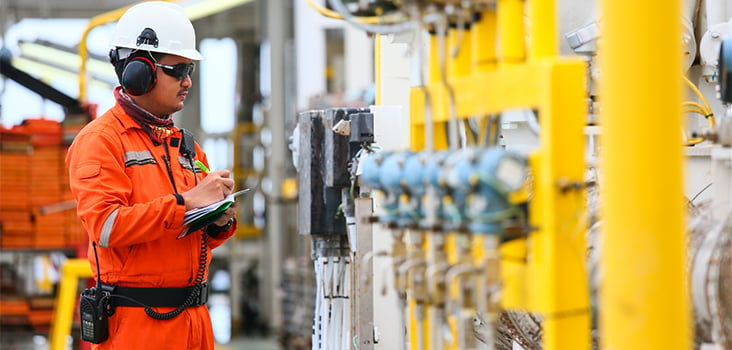
The Oil and Gas Citations You Need to Avoid
If you work in the oil and gas industry, you’re probably familiar with the regulations required by the Occupational Safety and Health Administration (OSHA). Some of these regulations tend to give companies a little more trouble than others, either due to mistakes, lack of resources, or lack of clarity.
To help you avoid a citation, we’re covering some of the most common OSHA standard violations made by oil and gas companies.
Why You’re Getting Cited
Here are five of the most common OSHA citations for oil and gas companies, and the mistakes you might be making to earn them.
Hazard Communication
- No written hazard communication program
- Lack of employee training
- Failure to make safety data sheets (SDSs) available
Personal Protective Equipment – General Requirements
- Not providing flame-resistant clothing to employees handling flammable chemicals
- Not properly maintaining and cleaning flame-resistant clothing
- Not ensuring safe design and construction of flame-resistant clothing
Electrical – General Requirements
- Exposing employees to electric shock
- Not following manufacturers’ instructions when designing, installing, and using electrical equipment
- Lack of proper employee training when working with electrical elements
Electrical – Wiring Methods
- Using flexible cords instead of fixed wiring
- Inadequate protection for workers
- Exposures to live contacts
Respiratory Protection
- Lack of proper respirator selection protocols
- Lack of, or poor fit testing
- Not having a written program
How to Avoid Citations
To avoid these citations and others, and keep your employees safe on the job, you can follow some of these prevention strategies.
Engineering controls. These are often the first line of defense against hazards, and can include substitution/removal, isolation, or ventilation. Your best option is to remove a hazard or substitute it with something safer. If this isn’t an option, the hazard needs to be isolated to prevent exposure. In a worst-case scenario, local ventilation should be used to prevent hazard exposure.
Appropriate work practices. Following simple, proper workplace practices can be one of the easiest ways to reduce the risk of hazards and keep workers safe. These include keeping the workspace clean, tidy, conducting regular equipment inspections, and holding thorough employee training.
Personal protective equipment (PPE). Employers are required to provide the appropriate PPE for employees who are exposed to certain hazards. Know what your employees may encounter and what is needed to protect them, and then make sure they understand how to use the PPE.
If you’re having some trouble with OSHA regulations, set an appointment with one of Concentra’s work health experts. We’d love to help keep your workforce safe and healthy.



